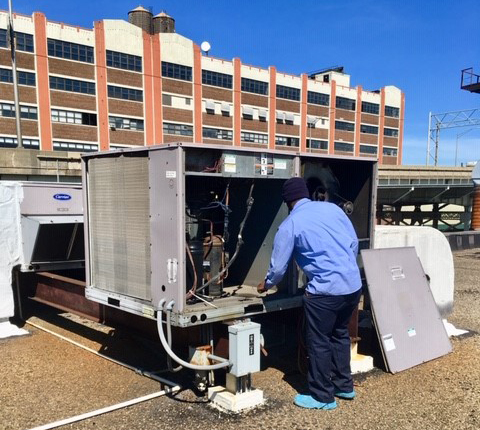By Luke Wonnell
Besides being a wicked awesome band name, the title of this article refers to some 201 level Thermodynamic principles that have a significant impact on the performance of your steam boiler. “Heat flux” defines how much heat transfer occurs through a given material’s surface area and is expressed in (Btu/hr-in2 or W/m2). Think of the bottom of a pot as the given surface area… the heat flux simply defines how many Btu’s/hr will be transferred through the bottom surface of the pot.
What’s amazing about heat flux is it’s not inherent to a specific material… it’s not like Cast Iron has one particular heat flux value and Carbon Steel has another different heat flux value. In fact, the heat flux value (vertical y-axis) changes in very interesting ways as the surface temperature of the metal that’s in contact with the water increases (left to right on the horizontal x-axis) as shown in the diagram below:
Source: https://www.thermalfluidscentral.org/encyclopedia/index.php/Pool_Boiling_Regimes
Let’s walk through this diagram by using a real-world example of boiling a pot of water on the stove for Thursday night spaghetti dinner with the family:
Step 1 – After turning on the burner, the tap water (starting at approximately 60⁰F) in the pot slowly increases in temperature until it hits the boiling point (212⁰F). By the way… don’t watch this part, otherwise Steps 2 through 5 will never happen.
Step 2 – Once the boiling point is reached (212⁰F), the water at the bottom of the pot enters Region I (Natural Convection Boiling in YELLOW) but there are no bubbles forming yet. The warm water towards the bottom of the pot circulates towards the top and the cooler water falls to the bottom.
Step 3 – Once the surface temperature of the bottom of the pot reaches 253⁰F [41⁰F / 5⁰C above the boiling temperature], the water enters Region II (Nucleate Boiling in GREEN) and you will see tiny bubbles forming on the bottom of the pot and rising to the surface.
Step 4 – As the surface temperature of the bottom of the pot continues to increase, you will see (and hear) more bubbles and larger bubbles rising to the surface.
Step 5 – Once the surface temperature of the bottom of the pot reaches 298⁰F [86⁰F / 30⁰C above the boiling temperature], you have reached perfect boiling where you are most efficiently conducting thermal energy through the bottom of the pot. Engineers like to call this the critical heat flux, but I prefer “maximum boilage”. This is typically when you throw in the pasta and turn off the burner.
For an excellent video demonstration of the different boiling regimes, visit:


